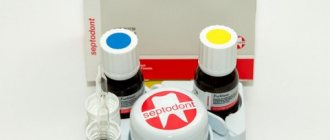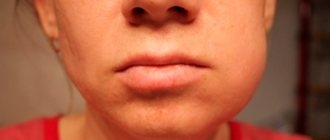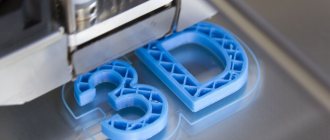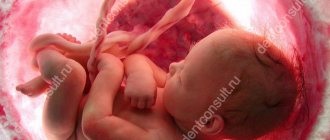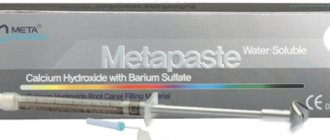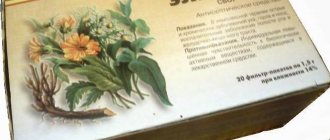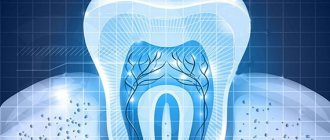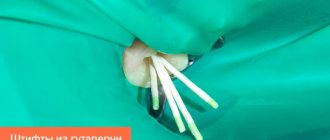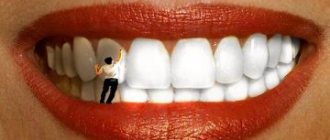Wiktionary has an entry for "gutta-percha"
Gutta-percha
(English
gutta-percha
; from the Malay “
guttah
” - “resin”, “gum”; “
perscha
” or “
percha
” - “island”, or “
pertja
” - the name of the plant) - resin extracted from the plant “
pertja
” ; high molecular weight hydrocarbon, identical in chemical composition to natural rubber. Chemical formula: (C5H8)n (polymer of 1,4-isoprene); geometric isomer (trans form) of isoprene, characterized by significantly less elasticity.
It is extracted from the milky juice of gutta-percha plants growing on the islands of the Malay Archipelago and the Philippine Islands. In Russia it is extracted from the warty euonymus. Gutta-percha is a leather-like product that is white or yellowish in color. It is capable, like rubber, of being vulcanized with sulfur.
Application
It is used as an insulating material in the electrical and radio industries, in the chemical and shoe industries, as well as in dentistry as a material for obturation of root canals in the treatment of pulpitis and periodontitis (non-absorbable filler for filling root canals, root filling). In particular, drive belts, conveyor belts, various gaskets, chemically resistant containers, various adhesives, and stamps are also made from gutta-percha. In the past, it was also used as a type of rubber - in particular, it was a traditional material for the manufacture of golf balls for a long time.
The material is elastic and pliable
It is interesting that when translated from English, the first part of the word “gutta” means resin, the second “percha” is translated as island. The expression “gutta-percha” has stuck among the people; it is used to describe those whose character demonstrates flexibility and evasiveness in thinking and actions.
Elastic material seals tooth canals well
What are the benefits of gutta-percha in dentistry? This allows you to easily fill the entire tooth cavity and reliably seal its canals, as well as strengthen the filling. But provided that the dentist does his job efficiently and has no problems determining the length of the canals. In cases where the tooth canals were not completely filled, patients may face unpleasant consequences: the infection can easily penetrate into the pulp chamber, cause complications, and the tooth will have to be unfilled and re-treated.
Mentions in literature
- Dmitry Grigorovich's story “The Gutta-percha Boy” tells about a boy who performs in the circus thanks to his extraordinary flexibility.
- In Nikolai Leskov’s story “Lefty”, the so-called “gutta-percha pill” is mentioned as one of the means of treating “half-skipper” (distorted “under-skipper”) - an Englishman who became very ill from drinking a large amount of alcohol (a bet was made with Lefty: who is more drinks alcohol) on a ship sailing from England to Russia.
- In Vsevolod Garshin’s book “From the memoirs of Private Ivanov”: “They lived together; the captain took kindly to the ensign, gave him water and food, and during the rains even covered him with his only gutta-percha cloak.”
- The book by Alexander Olbik is called “Gutta-percha love”
- In Vladimir Vysotsky’s song “Cliffhanger”
No allergic reactions
As scientists managed to find out, the material is quite inert and non-toxic. This means that it is not capable of entering into any reactions with the human body. Gutta-percha is a guarantee that even in sensitive patients the risk of tissue irritation and negative reactions is minimal. All materials used in dentistry for the purpose of preserving natural teeth must meet the same selection criteria as gutta-percha. One of its few disadvantages is the lack of adhesion to the walls of the tooth. But this disadvantage is compensated by special cement compositions, root sealants and pastes, which are used in conjunction with gutta-percha points.
Using natural materials, does not cause allergies
What is a gutta-percha pin made of? In addition to gutta-percha itself, specialists use zinc oxide to create it. It gives strength to the structure, which helps strengthen significantly damaged teeth and use the pin as a reliable support for an artificial crown, if necessary. The content of this substance is about 70% of the entire structure. Antioxidants are also used as excipients.
An excerpt characterizing Gutta-percha
Balashev went further, according to Murat, expecting to be introduced to Napoleon himself very soon. But instead of a quick meeting with Napoleon, the sentries of Davout's infantry corps again detained him at the next village, as in the advanced chain, and the adjutant of the corps commander was summoned and escorted him to the village to see Marshal Davout. Davout was Arakcheev of the Emperor Napoleon - Arakcheev is not a coward, but just as serviceable, cruel and unable to express his devotion except by cruelty. The mechanism of the state organism needs these people, just as wolves are needed in the body of nature, and they always exist, always appear and stick around, no matter how incongruous their presence and proximity to the head of government seems. Only this necessity can explain how the cruel, uneducated, uncourtly Arakcheev, who personally tore out the mustaches of the grenadiers and could not withstand danger due to his weak nerves, could maintain such strength despite the knightly noble and gentle character of Alexander. Balashev found Marshal Davout in the barn of a peasant's hut, sitting on a barrel and busy with writing (he was checking accounts). The adjutant stood next to him. It was possible to find a better place, but Marshal Davout was one of those people who deliberately put themselves in the gloomiest conditions of life in order to have the right to be gloomy. For the same reason, they are always hastily and persistently busy. “Where is there to think about the happy side of human life, when, you see, I’m sitting on a barrel in a dirty barn and working,” said the expression on his face. The main pleasure and need of these people is to, having encountered the revival of life, throw gloomy, stubborn activity into the eyes of this revival. Davout gave himself this pleasure when Balashev was brought in to him. He went even deeper into his work when the Russian general entered, and, looking through his glasses at Balashev’s animated face, impressed by the wonderful morning and the conversation with Murat, he did not get up, did not even move, but frowned even more and grinned viciously. Noticing the unpleasant impression this technique produced on Balashev’s face, Davout raised his head and coldly asked what he needed. Assuming that such a reception could be given to him only because Davout does not know that he is the adjutant general of Emperor Alexander and even his representative before Napoleon, Balashev hastened to announce his rank and appointment. Contrary to his expectations, Davout, after listening to Balashev, became even more severe and rude. - Where is your package? - he said. – Donnez le moi, ije l'enverrai a l'Empereur. [Give it to me, I will send it to the emperor.] Balashev said that he had orders to personally deliver the package to the emperor himself. “The orders of your emperor are carried out in your army, but here,” said Davout, “you must do what you are told.” And as if in order to make the Russian general even more aware of his dependence on brute force, Davout sent the adjutant for the duty officer. Balashev took out the package containing the sovereign’s letter and placed it on the table (a table consisting of a door with torn hinges sticking out, placed on two barrels). Davout took the envelope and read the inscription. “You have absolutely the right to show or not show me respect,” said Balashev. “But let me point out that I have the honor to bear the title of His Majesty’s Adjutant General...”
Gutta-percha
Details Category:
GUTTA PERCHA
, hardened sap of some plants, ch. image of the Sapotaceae family (see Gutta-percha tree). The juice is extracted by tapping 12-15 year old trees. Until recently, gutta-percha was extracted in a predatory manner - by felling trees and collecting sap from cuts in the bark, which led to the merciless extermination of gutta-percha trees; gutta-percha is also obtained from leaves and branches by extracting juice from them with toluene, petroleum ether or carbon disulfide; There is also a method for producing gutta-percha by applying alkali to crushed leaves and branches under a pressure of 5 atm. The best varieties of gutta-percha are yellowish-red or yellow in color, the worst are dark in color. Gutta-percha is tasteless and has an unpleasant odor when heated. Specific gravity 0.960-0.999; Gutta-percha is somewhat heavier than water if the air is removed from it. The cubic expansion coefficient of pure gutta-percha at temperatures from 0 to 40° is 0.000496. In polarized light (especially under pressure), gutta-percha produces beautiful colors. Raw gutta-percha is wrinkled and under a microscope appears to be riddled with many irregularly shaped small voids; When rolling or pressing, a fibrous, low-porous structure is noticed. At 25° gutta-percha is leathery, flexible, low-elastic, at 40° it softens, at 45° it is doughy, at 62-65° it is soft and easily formed, stretches into threads, plates, tubes, at 100° it is sticky, melts at 150° into easily movable a liquid that gradually darkens when cooked.
Dry distillation of gutta-percha produces thickening vapors; The distillate is yellow in color, has an unpleasant odor and is a good solvent for gutta-percha; in addition to water, it contains mainly rubber, isoprene and heveene. Gutta-percha ignites easily and burns with a bright, smoky flame. When rubbed, gutta-percha is charged with negative electricity; fresh gutta-percha is a poor conductor of heat and electricity. Under prolonged exposure to light and air, gutta-percha attaches oxygen and turns into a crumbling white mass; such gutta-percha becomes a good conductor of electricity and becomes positively electrified when rubbed. On the contrary, protected from light in water, especially in sea water, gutta-percha does not lose its qualities. Dilute mineral acids and salt solutions have no effect on gutta-percha; concentrated H2SO4 destroys gutta-percha; HNO3 also quickly destroys gutta-percha, forming red fumes. Gutta-percha completely dissolves in chloroform and carbon disulfide at ordinary temperatures; in benzene, turpentine, kerosene it dissolves when heated, in alcohol or ether - only partially; In boiling water, gutta-percha absorbs water, becomes sticky and stretches into threads.
Pure gutta-percha, obtained by decolorizing a solution of purified gutta-percha in chloroform with animal charcoal and precipitation with alcohol, is a hydrocarbon of the formula (C10H16)n. Raw gutta-percha contains resins, minerals, sugars, proteins, tannins and the following three characteristic components: gutta up to 82%, alban 14-15% and fluaville 4-6%. The content of gutta determines the good properties characteristic of gutta-percha - plasticity at high temperatures, elasticity and stretchability.
For practical use, gutta-percha must satisfy known conditions that depend on the physical properties of purified gutta-percha: the ratio between gutta and other resins affects the softening temperature; electrical properties depend mainly on the quality of gutta, on the amount of pollutants and on water. First of all, physical and mechanical tests are of practical importance - for example, finding the strength coefficient, insulating capacity, inductivity, resistance to penetration by an electric spark, and the degree of ductility. Next comes chemical tests for acid resistance, moisture content, resins and dirt.
The use of gutta-percha compared to rubber is extremely limited. Gutta-percha is used as an insulating substance for submarine cables, for medical and dental purposes, for molding, and for special rubber compounds. Gutta-percha is vulcanized with sulfur in the same way as rubber, but products made from vulcanized gutta-percha do not have any special advantages over unvulcanized ones and are of no practical importance. Gutta-percha is much more expensive than rubber, its price reaches 10 rubles per 1 kg.
In the USSR, on the Black Sea coast of the Caucasus, several specimens of the Central Chinese tree Eucommia ulmoides Oliv., the leaves of which contain a gutta-percha-like substance, have been growing for many years. The interest of this tree for industrial purposes was noted back in 1889 by Dubovsky and later by Vernuccio. Research on the use of Eucommia for the production of gutta-percha is being carried out on the initiative of Rezinotrest by the Abkhaz People's Commissariat of Agriculture (at the Abkhaz experimental station in Sukhum).
Source: Martens. Technical encyclopedia. Volume 6 - 1929
- < Back
- Forward >
Affordable material cost
Dental treatment using gutta-percha is available to everyone today. The cost of installing material into the tooth canals can vary from 1 to 3 thousand rubles.
Previously, paste was placed in tooth canals as a filling material, but it tended to quickly dissolve, forming voids in which bacteria and pathogenic microflora easily multiplied. Methods of using gutta-percha in dentistry have brought the quality of service provision to a fundamentally new level. Thanks to this, long-term preservation of natural teeth has become possible.
Notice
: Undefined variable: post_id in
/home/c/ch75405/public_html/wp-content/themes/UltraSmile/single-item.php
on line
45 Notice
: Undefined variable: full in
/home/c/ch75405/public_html/wp-content /themes/UltraSmile/single-item.php
on line
46
Rate this article:
( 3 ratings, average: 5.00 out of 5)
pulpitis
Ensures long tooth life
If you want to restore a tooth for a long time, then you will definitely need gutta-percha for this. They also like to use it in dentistry because it does not absorb liquid, repels it, and retains its properties throughout its entire service life. This allows the entire structure to serve for a long time and not collapse or dissolve under the influence of various factors.
Pins made of materials such as gutta-percha, in turn, also do not affect the microflora of the tooth cavity. On the one hand, this is a minus - the material does not have bactericidal properties, since it is neutral. But with high-quality treatment, with hermetically sealed canals, such a need should not arise.
